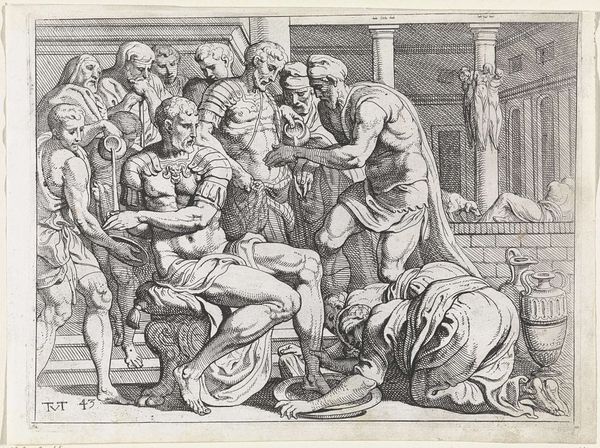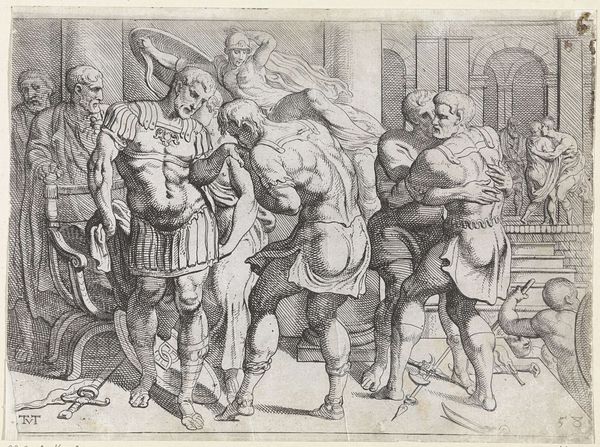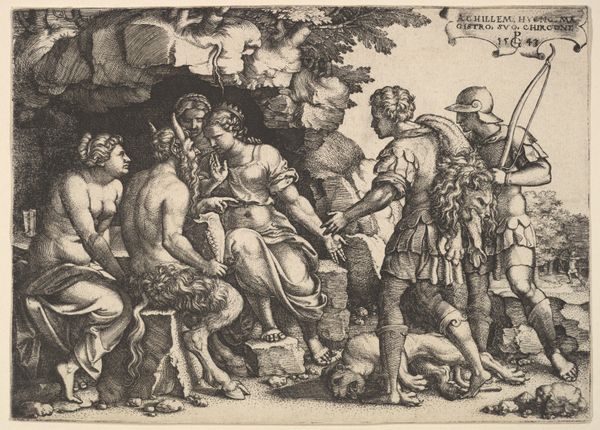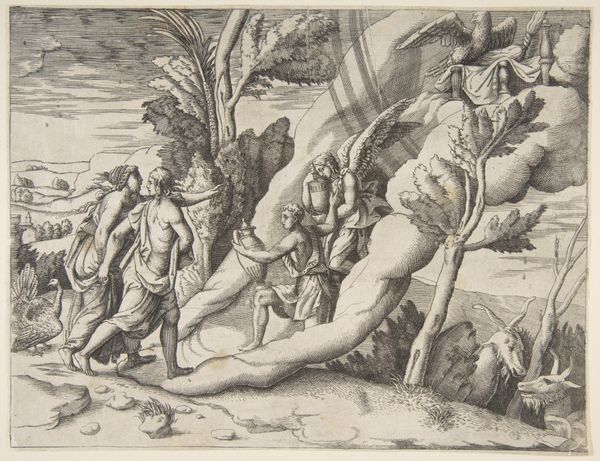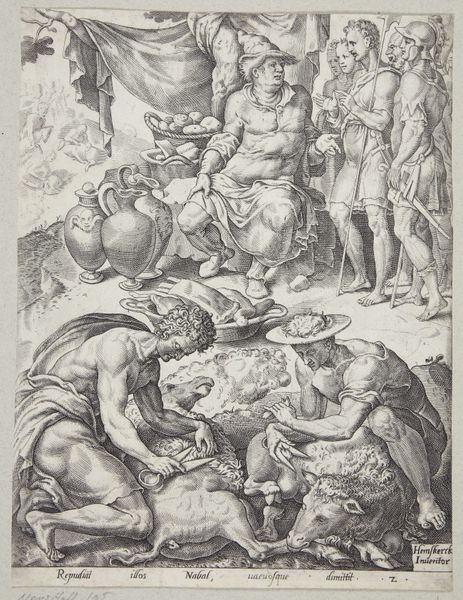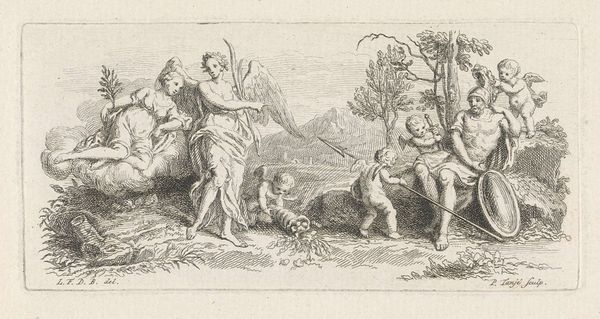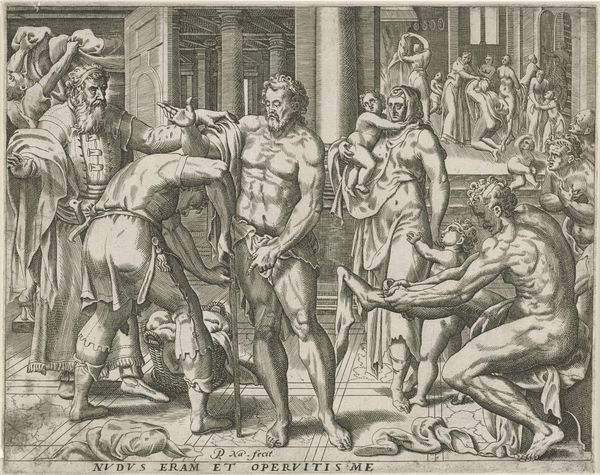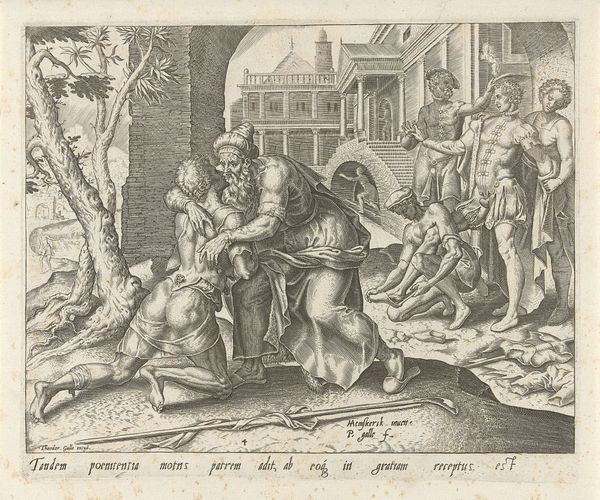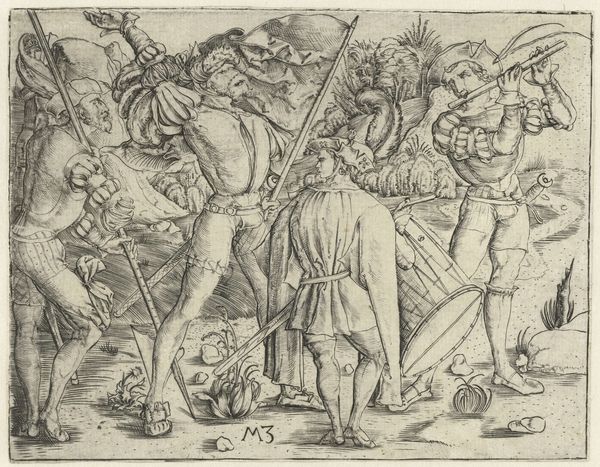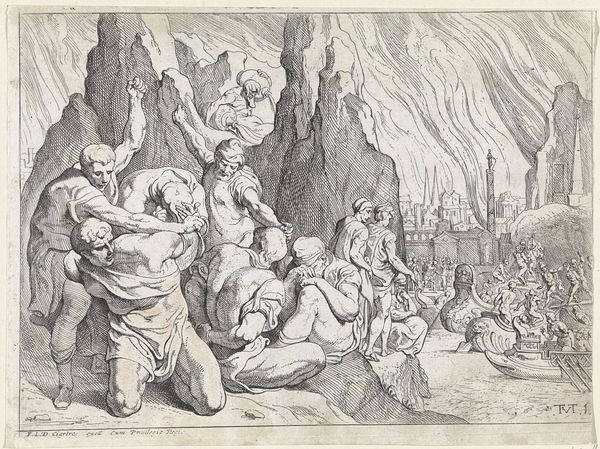
#
quirky sketch
#
pen illustration
#
pen sketch
#
junji ito style
#
personal sketchbook
#
sketchwork
#
pen-ink sketch
#
sketchbook drawing
#
sketchbook art
#
fantasy sketch
Dimensions: height 193 mm, width 255 mm
Copyright: Rijks Museum: Open Domain
Editor: So, here we have Theodoor van Thulden’s "Odysseus in het land van de lotuseters" from around 1632. It looks like an ink drawing or etching. I find the figures very compelling. They all appear to be in distress, with such incredibly modeled physiques. What do you see in this piece? Curator: The immediately striking element is the masterful use of line. Look how Thulden employs varied densities of hatching to articulate form and create depth. Note the strong, almost diagrammatic outlines. Also the intricate composition guides the viewer's eye in a continuous loop from the beckoning figures on the left to the entranced ones on the right. Editor: The shading really does bring them to life! What is it about the composition that is significant? Curator: The figures’ arrangement into groups, delineated by strong lines and shadows, emphasizes the psychological separation between those still under the spell and those being urged to leave. Observe also, how the stylistic details serve to emphasize the contrast in emotional states. Is that difference effectively conveyed or is there a flaw? Editor: I think the contrast works really well. Seeing the men pulled in opposite directions like that really gets across the allure and the danger of the lotus. I can definitely appreciate how the composition underlines that. Curator: Indeed, and reflecting upon the structural relationships within the artwork, and how they generate its meaning, gives us, perhaps, the best method for analysis of Thulden’s choices. Editor: Thanks, I never really thought of analyzing the composition so rigorously! It gives a totally new appreciation to how the artwork generates narrative.
Comments
No comments
Be the first to comment and join the conversation on the ultimate creative platform.
